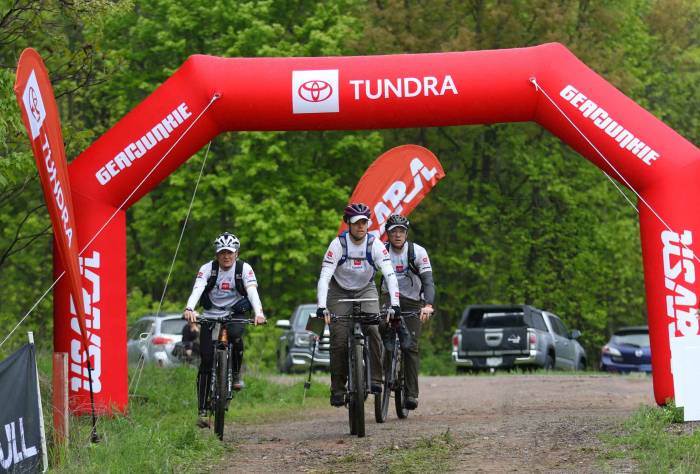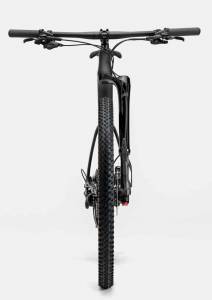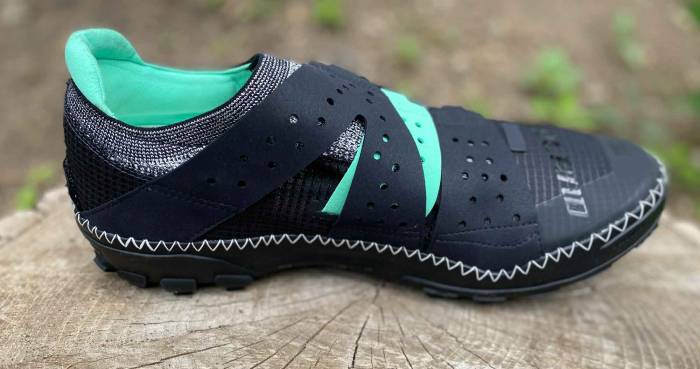Race Gear: Midseason Update From Team GearJunkie
With 100-plus hours of race time already on the books this year, GearJunkie reports on some key gear for its 2022 season.
My hands are blistered, and a few toenails have turned black. I’m a bit weary, but it’s been worth it. In the past 2 months, I have managed to squeeze in more time outdoors than some people see in a year.
This spring, GearJunkie announced a partnership with the United States Adventure Racing Association (USARA) and a sponsorship with Toyota Tundra. With the project, our company formed two race teams and signed up for a season of events. We also began the process of curating the needed gear.

It began with regional races in the Midwest, including a half-day event in Minnesota (where GearJunkie was founded) and a tough course in the bluff country of Indiana.
We signed up for the biggest adventure race in America, with 500 participants, the Rib Mountain Adventure Challenge. Then, in late June, our two squads — Team GearJunkie and Team Toyota Tundra — toed the line at the notoriously tough Stubborn Mule race in the wilds of northern Wisconsin.
It would be 30 hours in the woods and on water paddling an endless, winding stream on the Mule course. Checkpoints, double-track trails, deep forests, swamps, and preposterous clouds of mosquitoes were the obstacles along the way.

Gear helped get us through. In all, since early April to today, we have raced in eight events and seen 100-plus hours out there on the trails and deep in the woods. Team Toyota Tundra has been ticking off the wins, and currently, the squad is ranked as the No. 2 team in America by USARA.
The below equipment, from mountain bikes to a special foot lube, has been key to helping me get from the numerous start lines, to hundreds of checkpoints, and to the end on wilderness courses that took all I got. This is a cursory look that leans into common gear as well as some of the more esoteric items that adventure racers employ.

We will continue to test this and other gear throughout the season, leading up to the USARA National Championships race in September. There, our teams will line up with the best racers in the U.S. in Bishop, Calif., at the foot of the Sierra Nevada mountains for another 30-hour endurance quest requiring physical endurance and, of course, all the right gear.
Mountain Bike: XC Speed Demon
Speed is the primary concern on the bike in an adventure race. For this reason, I often default to agile, lightweight hardtails made for XC racing. The Scalpel HT Hi-MOD 1 from Cannondale checks these boxes, and this year on the course I have felt faster, stronger, and more confident with this ride.

The company touts a “whole new breed of XC hardtail” because of the bike’s made-for-speed design. It is a streamlined mountain bike on the face, including a carbon frame and wheels, and a Lefty Ocho Carbon 110mm fork and it has “flex zones” in the chainstays to decrease chatter.

Cannondale was aiming for “better control and more speed” with this bike. That sounded good to me. Indeed, its Shimano XTR/XT 12-speed group offers enough range for any type of trail, and also (important for adventure racing) the range is big enough to get into a powerful gear on gravel roads where the team must paceline for miles between checkpoints.
After years of searching for a perfect AR bike, the Scalpel HT Hi-MOD 1 comes very close. I load it up before a race with two bottles, a saddle bag, and a small box on the top tube for food. The bike pops to life with a pedal stroke, its sub-23-pound build is a rocket for its size. Now 500-plus miles into the bike over a few races, I am not looking back.
Footwear for the Race
I am a shoe junkie. Over the past 2 decades, I have tested and put many thousands of miles on trail runners, from my home in Minnesota, in marathons and ultras, and all around the world. My shoe of choice after all this is one with a grippy, minimal build, a bit of drop for speed, and a meshy upper to drain water if my foot gets wet.
Last year, while racing in the USARA National Championships, I wore the La Sportiva Kaptiva Shoes. In a review post-race, I raved about the $139 shoes (now $155) being “light at about 9 ounces per foot, and a fit and feel that is precise” and that the “shoe flexes and grips on the trail and in the woods.”

The Kaptiva shoes came along on a few races this spring again, and I appreciate the low-to-the-ground feel and the foot speed that comes from a lightweight shoe.
Beyond Sportiva, I piloted a pair of futuristic shoes from startup Speedland of Portland, Ore.
The SL:HSV model (below) are a crazy concept of a shoe that costs $375 per pair. I have known one of the founders, David Dombrow, for a few years while he worked and built footwear for big brands. Speedland is his boutique new effort, and the shoes are stunning out of the box.

From the uppers on down, every piece is precise and dialed, including (most literally) the thin fabric upper wrap that is secured by dual BOA dials. You spin these to customize the fit in lieu of laces. They feel like bike shoes at first.
Dyneema fabric wraps the cuff. A carbon plate in the midsole gives propulsion and protection underfoot. The sole is a treaded Michelin rubber that chews the mud.
Speedland has built a stunning shoe with the SL:HSV. On training runs before my races, I loved the fit and feel; few running shoes fit as precisely, and the design promotes a fast gait where you can be aggressive over any kind of terrain.

For adventure racing, however, this is not the right shoe. I spoke with Dombrow before the test and he gave me the caveat that this shoe was designed for trails (not the off-trail, bushwhacking terrain often encountered in an adventure race).
Indeed, during the races, the BOA dials (which pop off if pressured) came unattached more than once when in rough, off-trail terrain. It took a second to bend over and reattach.
Adventure racing finds you tromping in swamps and heading off-trail. It is a strange sport where trails are preferred on long treks and orienteering legs, but you always cut corners to bushwhack — sometimes for long distances — through the woods, side-hilling, and post-holing for unfortunate short distances through muck and mud.
For this uneven terrain, the Speedlands were not ideal. These are racecars made for trails, not the mud pits and bushwhacks on an adventure racing course.
Map Bags & Wrist Compass
Adventure racing requires a myriad of weird items like packing tape, highlighter pens, and UTM plotters to prep maps and cluesheets for the course. Most events begin with a map handout, and from there, teams have a set amount of time to plot checkpoints and plan their route. It is crunch time when this begins, teams scrambling to highlight trails, two-tracks, and annotate maps with directionals that are readable while on the move.
For each race, we employ a waterproof map case and multiple map bags. These are essentially flat plastic bags that slip over 11×17-inch and other size paper maps. No GPS or phones are allowed in the sport, so preserving the paper maps through hours of bushwhacking, water crossing, and general hashing on the course requires protection.
I bought a bulk supply of map bags from a scrappy e-commerce site, GoOrienteering.com, which despite its arcane design provides a reliable source for hard-to-find map supplies.

Compasses for the sport often lean into the orienteering landscape as well. For this season, I use a thumb compass while on the run. This esoteric navigation tool attaches with a fabric loop to your thumb (as per the name) and serves as a quickly-readable arrow to guide you ahead.
I also purchased a wrist compass from tanZ Navigation. The Moscow Model 3 compass has a quick needle and a clean display for getting a bearing in the woods. I like the wrist-mounted style for its out-of-the-way (yet always seeable) nature. On a bike, in the boat, or trekking in the woods, a quick glance at the wrist and I have a reading.

Optics: RX and Sunglasses
I was happy last year with Tifosi and the Swick frames I rocked to race in 2021. The prescription glasses have a Grilamid frame that has stood up to all the abuse I could throw and fit well even when sweat pours.
This season, I upgraded to the Swank XL. These Tifosi glasses come in an RX version I need, and the oversize design is both functional and fun. They are a bargain at about $100, prescription included.
The rest of the team wore rimless cycling sunglasses, the Tifosi Rail. These Grilamid-frame glasses have shatterproof polycarbonate shield lenses that interchange and come in tints for bright and low-light scenarios.
When you race through the night (common on adventure races) you need a clear lens. The Rail lenses switch out easily and provide a solid fit with hydrophilic rubber at the ear and nose.
Check Rail PriceCheck Swank XL Price
Foot Lube

Your feet get abused out there. Blisters are an enemy to many racers. My recommendation is a potent combo of wool and lubricant, namely Bag Balm, a lanolin-based salve that is made in Vermont. I rub copious amounts on my feet, beginning at the toes (in between each one) and then a dab on my heel.
Pull a sock over the gooey foot and you are good to go. The Bag Balm stays tacky and lubricating for hours, letting the skin move and avoid abrasion.
If your feet get wet, which is common in the sport where you cross streams or swamps, the Bag Balm acts as a waterproofer of sorts — my skin does not get as pruney with the protective lanolin layer.
Socks
For socks, I default to merino-wool-based running socks, thin and either high ankle or mid-calf in height. SmartWool, Darn Tough, and others make great options. This year, I am testing the Flite XT Trail sock from Swiftwick. It fits close and tight, yet is comfortable all day.

A nylon/merino/olefin/polyester/Spandex material mix works in these highly engineered socks, which cost a pretty penny at $27 per pair.
The company credits the design to be able to keep feet “blister-free even during the longest of treks.” I can say this is true for me this season, though some Bag Balm has aided along the way.
Smartwool also provides socks for the team. Its Athlete Edition Run Print Crew Socks are another premium option for trail runners and ultra-oriented athletes, including a $27 price tag and a merino-blend material that is dialed for long distances.
They have an athletic fit (thin, tight, non-slipping, non-bunching) and a colorful motif. The company’s “Indestructawool” — a merino/nylon material — is built for durability but also comfort on the foot. So far, these made-in-the-USA socks have proven perfect for AR.
This article is sponsored by Toyota. Explore 2022 Toyota Tundra models and packages at Toyota.com.
The post Race Gear: Midseason Update From Team GearJunkie appeared first on GearJunkie.


